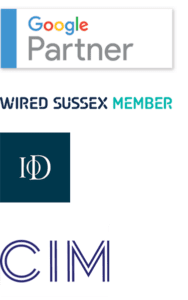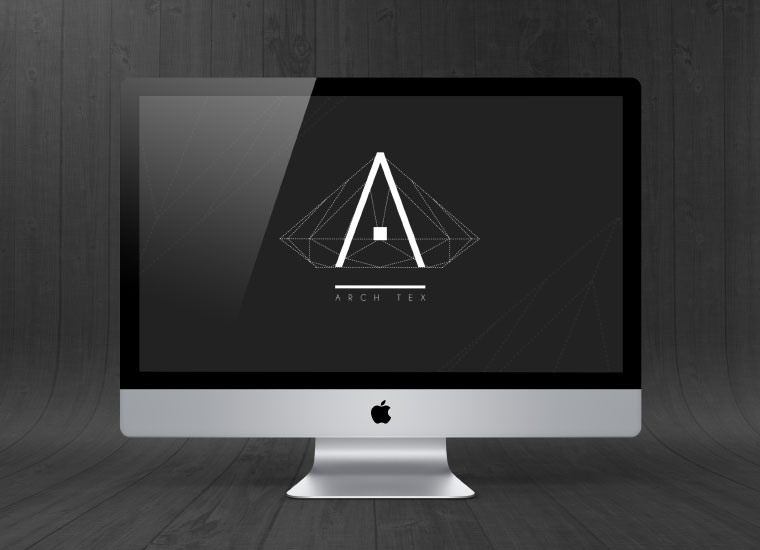Guest blog: Valentine’s day flirty four
Struggling to get click-through? Bamboozled by what your digital marketing gurus are saying? And dearly hoping you’ll never be asked what the buzzwords they bandy about actually mean? We’ll look at four: smart audio, brand safety, voice search and AI which is artificial intelligence and basically means machine learning.
Well this Valentines, to show we care, Digital Web World are demystifying 2019’s ‘Flirty Four’ i.e. the digital marketing foursome making all sorts of promises for the year ahead.
1. Smart Audio
WHAT IT IS: You telling tech what to do and it doing it.
WHERE IT’S AT : If you feel like you’ve seen Amazon’s ‘Echo Show’ advert a lot – (the one with the father curious about who his pasta-boiling, tomato sauce-burning daughter has got coming to dinner), then it’s probably because you have. It hit the humble TV screen back in November 2018 but it’s still regularly beaming into our living rooms every night. And it’s now February 14th 2019. It’s the Echo Show; with a four-month echo it seems.
The point is this. The likes of Amazon’s Echo Show (a ‘smart-speaker’) are apparently selling like hot cakes. At a closing down sale. Where everything’s free. And Amazon’s Echo Show is also an example of machine learning: using a machine, Alexa to communicate virtually.
In fact, in the US alone, the equivalent of almost the entire UK population now owns one (that is 56 million adults – or one in five Americans, according to the Smart Audio Report by Edison and NPR). Usage has ballooned from the speaker’s ‘assistant’ taking care of home security and the controls of other household devices, to traffic reports, shopping, and product research. This quarter, Amazon confirmed it’s doing rather well (even if their repeated advert is making you feel a little unwell): it has shipped more than 100 million devices with showpiece assistant ‘Alexa’ on board.
WHO SAYS SO: Digital marketing visionary Mitch Joel, the former president of WPP-owned Mirum, told Digital Web World that Smart Audio is one of his top two digital marketing trends of 2019.
Mr Joel has said, citing his blog: “Audio is the best user interface. It’s the way humans communicate. We will, in the not-too-distant future, communicate with and through technology with voice, and voice only.”
Mr Joel, named by Strategy Magazine as a “Rockstar of Digital Marketing” (doubters of ‘Smart Audio’ take note), has also been named one of the top 100 online marketers in the world.
Neil Watson, Marketing Manager for UK & Ireland at luxe headphones-maker Sennheiser agrees with Mr Joel, he said: “In an effort to counter the corporate and digital delivery of products and services, brands will look to humanise their message, and what better way to humanise than talking to customers? So ‘voice’ is going to become vogue again.”
He also told Digital Web World: “Digital always promised the potential of personalisation, but it turns out that unless there is some human authenticity to the execution then it doesn’t matter how good the data is, customer’s don’t buy it as a personal experience. To get personal means to listen, and talk.”
2. Brand Safety
WHAT IT IS: Your company’s ads being safe from popping up next to nasty content.
WHERE IT’S AT: The tragic death of Molly Russell in 2017 still has painful reverberations today. A 2019 investigation by the BBC, conducted in the wake of the teenager killing herself after viewing self-harming images on Instagram, found that UK high street brands were plugging themselves next to the sort of awful images that Ms Russell’s father says made his then-14-year-old daughter take her own life.
While Instagram made some changes last month, advertising groups have been forced to state that their clients did not opt to be associated with content showing suicide, self-harm and depression.
Brand Safety got going as an issue in 2017 too. Back then, YouTube saw a slew of advertisers pull their content because their genuine commercial messages were showing next to extremist terror videos. Those pulling out included The Cabinet Office and The Guardian newspaper. Oh, and some 248 additional advertisers.
WHO SAYS SO: “Today, advertising in the news feed is targeted to the individual and there is no control over what else appears with it,” said advertising industry body ISBA (responding at the time to the BBC investigation.)
“We encourage Facebook and the wider industry to work together to avoid pushing this problem from one platform to another… [but]we recognise the importance of Instagram as a marketing tool to members operating in competitive markets.”
To Mitch Joel, founder of Six Pixels Group, Brand Safety is his other big digital marketing buzzword of 2019 (alongside Smart Audio.)
“A brand can choose where the ads are placed. Do not kid yourself into thinking that this is not possible,” he insisted.
“Brands spend tons of money on the mission and on the message, and then became very loose on where that message gets placed. Programmatic systems haven’t helped this problem, either.”
Writing in The Thing about Brand Safety, the veteran marketer concludes: “Of course, the full responsibility for brand safety has to be a partnership between the brand, media company/agency and publisher.”
3. Voice Search
WHAT IT IS: Speaking the query you once Asked Jeeves (remember him?) Plus details.
WHERE IT’S AT: As we’ve said before, Voice Search (unlike old skool Google Search on your desktop) is not just about stating aloud ‘keywords’ – it’s about meaning, content and intent. It’s about you or your customers speaking up to pose specific, full length questions.
To give you a sense of the sheer about-turn Voice Search has created, we need to give you some numbers. Some 75% of CMOs recently admitted to QueryClick that their brands will do nothing short of CHANGING their entire SEO strategy to ensure it appears in voice-led search results! While arresting, that finding is almost one year old (published March 2018.)
But there’s a reason we’re telling you at the moment, and it’s this: a big chunk of those SEO-revamping, voice search-conscious CMOs are actually prepping that SEO revamp to pop up in voice-led search results right now. Indeed, one-third said they’d do their overhaul in at least 12 months’ time. So this April, May and June 2019, don’t expect SEO consultants specialising in voice-search to be available. Or cheap. But do expect marketers to be changing their online game. Massively.
WHO SAYS SO: “We believe that voice is like Apple’s AppStore,” the Bristol-based research company ReThink Research has put it nicely. “It acts as a route to market for services, and those services will pay a percentage of revenue to be brought to market via voice.”
Mark Wild, digital strategist for Begbies Traynor, the UK’s largest professional services consultancy told Digital Web World: “2019 is already shaping up to be the year for voice search.
“With Echo device sales [at Amazon] in the millions, the barrier to target has got significantly lower. And with convenience and ease at the heart of voice search, marketers in 2019 can expect to see more opportunities to target their audience even better.
4. AI or Artificial Intelligence
WHAT IT IS: Better exploiting what machines learn or can do for us and our clients.
WHERE IT’S AT: AI (aka Artificial Intelligeneveryday, in the everyday of most of the connected world in fact, without lots of people necessarily realising it. Left to its own devices, AI or machine learning is always learning and customising the more its users (hapless or not) continue to use it. Just go online for a search or three of almost any product – ‘a dozen red roses’ for today’s Valentine’s Day, for example. A chatbot will pick up on this and lay on products that match your preference alongside the best deals as soon as you’re on many a landing page. Search a lot, and your penchant for romance will be visible to anyone who glances at your monitor!
As a specific technology to invest in however, Chatbots got the thumbs-down from marketers in a QueryClick report, albeit following significant investment in recent years. Other digital marketers foresee the use of chatbots and automated responses as heading for full maturity this year, especially within popular messenger apps.
As a whole, AI or machine learning is in such rude health that it was last month hailed as “the world’s greatest natural resource” by IBM.Vested interest? Perhaps. But speaking at CES in Las Vegas, Big Blue said AI would soon enable revolutions from smart cities and healthcare, to transportation and robotics.
WHO SAYS SO: “As technology continues to evolve at an astronomical pace, so do the opportunities,” said Begbies Traynor’s digital strategist Mark Wild.
“Artificial Intelligence offers an increased capability to store intelligent details about your audience. AI enhances personalisation and automation giving you the ability to bridge an emotional connection between brand and consumer.”






